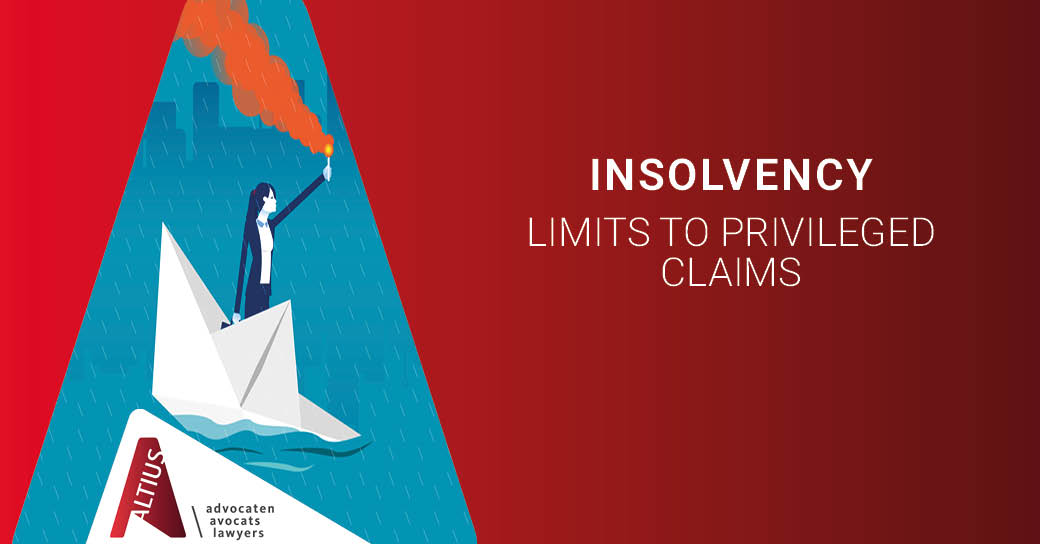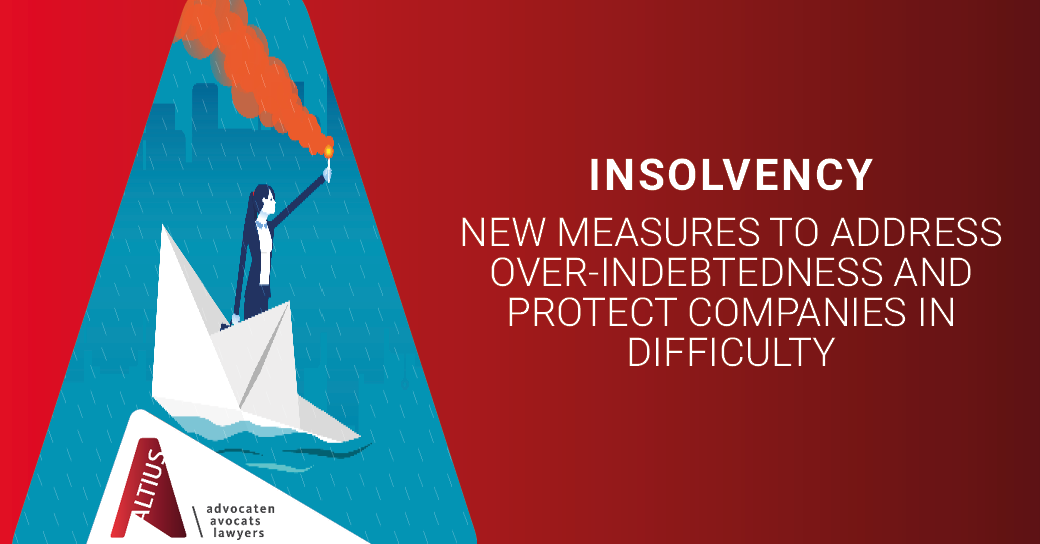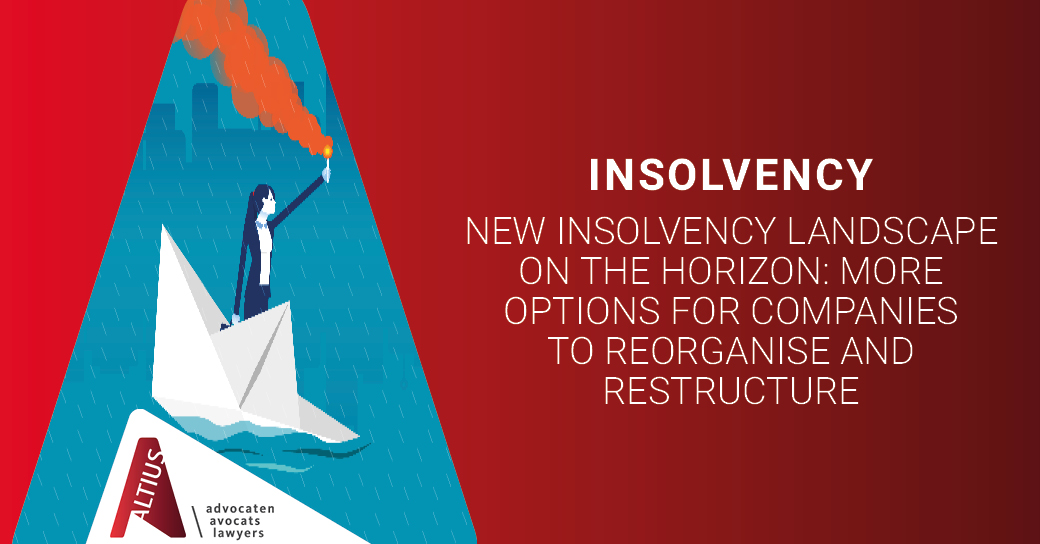Limits to privileged claims

A company (debtor) involved in reorganisation proceedings is in principle not protected against new claims that originate after the reorganisation proceedings have been opened (for further details please see “Reorganisation proceedings: access and possibilities“). Such new claims can be the result of both new contracts or the continuation of existing ones.
Enforcement of such new claims against debtors remains possible. If a company’s reorganisation is unsuccessful and it is declared bankrupt or liquidated, such claims are considered ‘privileged’ in the framework of the subsequent liquidation. Such privileged claims will in principle be paid out before any other claim, providing them with so-called ‘super priority’. However, this super priority often conflicts with the rights of other privileged or secured creditors.
On 22 February 2018 the Supreme Court delivered an important judgment regarding the relationship between privileged creditors in the framework of reorganisation proceedings and secured creditors in the event of a subsequent bankruptcy (for further details please see “Relationship between privileged and secured creditors“).
This article addresses a separate judgment of 10 May 2019 in which the Supreme Court clarified possible conflicts in such liquidation scenarios.
Facts
A company (debtor) was admitted to the reorganisation proceedings on 3 May 2011 and was declared bankrupt on 15 November 2011.
During the reorganisation proceedings, Bank A granted a business credit to the company on 1 August 2011.The business credit was used to reimburse loans that Bank A had previously granted to the same company.
To secure the (new) business credit, a personal guarantee was granted to Bank A.
After the bankruptcy, Bank A claimed payment of the personal guarantee.
The guarantor introduced a claim in the bankruptcy, stipulating that he was a subrogated creditor in the rights of Bank A. As a result, he stated that his claim was a new claim, as was Bank A’s claim, which should be paid out in first order.
As such, the guarantor’s rights conflicted with Bank B’s rights that invoked a pledge on the business.
Decisions
The Court of Appeal decided that Bank A’s claim had to be seen as a new claim which should be paid out in first order after the bankruptcy.
The fact that the amounts provided by Bank A were used to pay off its old and outstanding debts was irrelevant to the court.
The Supreme Court quashed the Court of Appeal’s ruling.
The Supreme Court determined that Bank A’s claim could be qualified as a new claim only to the extent that it brought new financial resources to the company.
As the new funds were used to reimburse old loans, Bank A’s claim (and the claims from the guarantor) could not be seen as new claims.
Therefore, these claims could not receive preferential reimbursement in the framework of the subsequent bankruptcy.
Comment
The Supreme Court’s judgment is relevant in (at least) two aspects:
- First, it confirms that new financing during reorganisation proceedings in principle results in new claims, leading to a privileged status of such claims in the framework of any subsequent liquidation.
- Second, it confirms that the courts require actual and new financing (ie, mere refinancing is insufficient).
In the framework of refinancing operations, parties must therefore ensure that their new financing is seen as actual and new.
Therefore, parties and banks should avoid direct or indirect links between new financing and the reimbursement of old and outstanding claims.
In addition to the new financing, the company and Bank A (together with at least one other creditor) could enter into an amicable arrangement to pay off the old debt. In the framework of such an arrangement, new securities could be introduced. If legal requirements are respected, such a contract could not be challenged by the bankruptcy receiver.
The above, if executed while respecting legal requirements, will result in a real and new financing agreement (with super privilege after bankruptcy) and another agreement regarding the reimbursement of old loans (if need be with new securities) that the bankruptcy receiver cannot easily set aside.
Written by
Recommended articles
New measures to address over-indebtedness and protect companies in difficulty
On 1 July 2024, the Act of 15 May 2024 on measures to address over-indebtedness and protect companies in difficulty was published in the Belgian Official State Gazette. The main amendments of the Act, as well as its entry into force, are briefly discussed below.
Read onNew insolvency landscape on the horizon: more options for companies to reorganise and restructure
Belgium had accumulated a significant legislative backlog within insolvency law. The European Directive 2019/1023 on restructuring had to be transposed into national law by the member states by 17 July 2022 at the latest. The Belgian government did not submit a draft bill to this effect until 20 March 2023. This draft has since been voted into law and will enter into force on 1 September 2023.
Read onHeiploeg’s impact on Belgian insolvency law
The European Court of Justice’s (“ECJ”) Plessers judgment seemed to cause a serious threat for the applicability of the Belgian reorganisation procedure by transfer under judicial supervision, and the right of the interested buyer of the debtor’s activities to choose which particular employees it would take over. But, in the end, it has turned out to be “much ado about nothing”.
Read on


